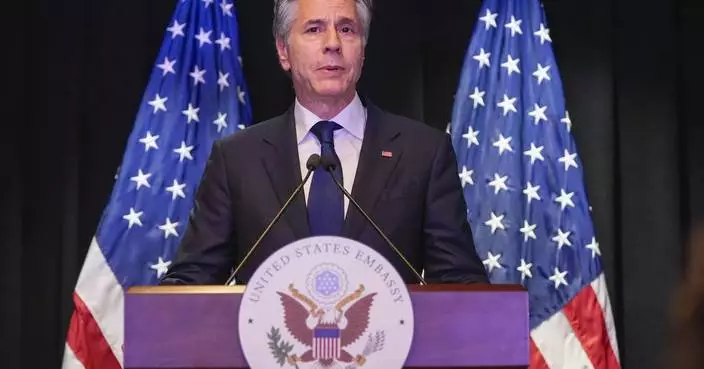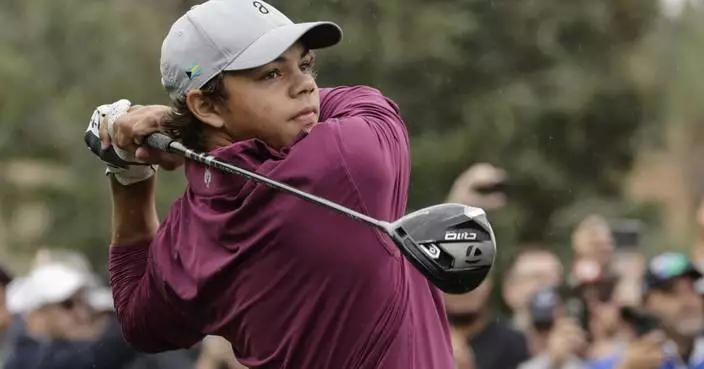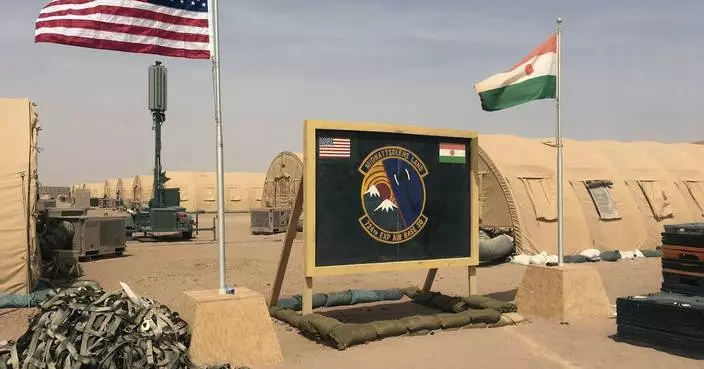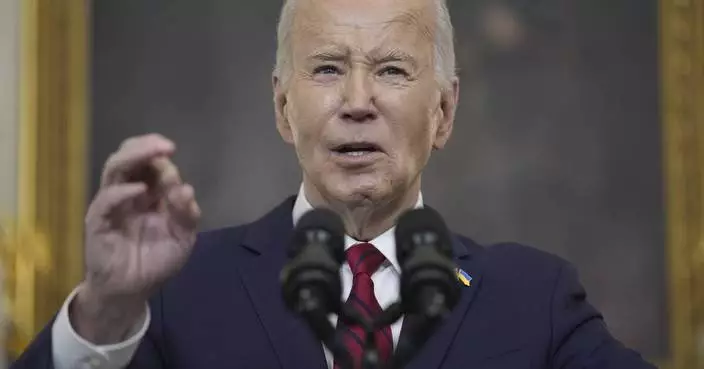The head of the Army Corps of Engineers has sent Congress a $778 million plan to fortify an Illinois waterway with noisemakers, electric cables and other devices in the hope that they will prevent Asian carp from reaching the Great Lakes, where the aggressive invaders could leave other fish with too little to eat.
Lt. Gen. Todd Semonite on Thursday approved the plan to install defenses at the Brandon Road Lock and Dam near Joliet, Illinois, about 40 miles from Lake Michigan. The site is a crucial choke point in an aquatic pathway between the lake and the carp-infested Illinois River.
The plan represents a compromise between proposals to erect barriers that would seal off Lake Michigan from the river and less drastic measures such as stepped-up commercial fishing.
Environmentalists and states including Michigan had argued for physical separation, while Illinois and Indiana contended that it would disrupt cargo shipping and that a Chicago-area electric barrier was keeping the carp at bay.
Although only a few live Asian carp have been found past the barrier, the fish's DNA has turned up there as recently as April, when water samples were taken from Chicago's Lake Calumet. The Corps says the leading edge of adult bighead and silver carp — the most feared of several Asian species because they gorge on plankton that other fish need — is about four miles from the Brandon Road complex.
"The Brandon Road project is the only shot we have to get additional protections in place to stop the carp," said Marc Smith of the National Wildlife Federation. "It will significantly reduce the risk."
The plan calls for installing a gantlet of technologies intended to repel approaching fish, including additional electric barriers and underwater speakers that would blast loud noises, plus an "air bubble curtain." A specially designed "flushing lock" would wash away carp that might be floating on the water as vessels pass through.
Semonite's endorsement came more than five years after the Army Corps offered a series of options for blocking the carp's advance.
It's now up to Congress to decide whether to authorize the project and provide most of the funding. A pending House bill recommends $3.8 million for preconstruction, engineering and design work in 2020. The expected completion date is March 2027.
"With the Asian Carp on the doorstep of our region's most vital natural resource, we have a small window of time to stop this invasive species before it inflicts irreparable damage on our Great Lakes and our $7 billion fishing industry and equally important tourism industry," said Rep. Marcy Kaptur, an Ohio Democrat who chairs the Appropriations Subcommittee on Energy and Water Development.
Republican Reps. Paul Mitchell and Bill Huizenga of Michigan also pledged support.
Bipartisan teamwork will be essential, particularly given the plan's escalating cost, said Molly Flanagan of the Alliance for the Great Lakes.
A draft released in 2017 estimated that the project would cost $275 million. The final version put the price tag at $778 million, and that would be under an "expedited" scenario in which the various technologies would be installed at the same time. It could reach $832 million under an alternative "phased" strategy, spokesman Allen Marshall said.
Another key will be getting financial support from Great Lakes states. The Army Corps generally requires non-federal partners to pay 35 percent of a project's construction costs, although Congress could waive some or all of the requirement.
Illinois Gov. J.B. Pritzker last month authorized his state's cooperation with initial phases of the program but said he wouldn't commit to long-term support without efforts to limit costs and contributions from other states.
Sens. Dick Durbin and Tammy Duckworth, both Illinois Democrats, said Friday that they would seek congressional approval "under a cost-share agreement that will ensure Illinois isn't left footing the bill for a project that will benefit the entire Great Lakes region."
Follow John Flesher on Twitter: http://twitter.com/johnflesher
KYIV, Ukraine (AP) — A Ukrainian court on Friday ordered the detention of the country’s farm minister in the latest high-profile corruption investigation, while Kyiv security officials assessed how they can recover lost battlefield momentum in the war against Russia.
Ukraine’s High Anti-Corruption Court ruled that Agriculture Minister Oleksandr Solskyi should be held in custody for 60 days, but he was released after paying bail of 75 million hryvnias ($1.77 million), a statement said.
Ukraine’s National Anti-Corruption Bureau suspects Solskyi headed an organized crime group that between 2017 and 2021 unlawfully obtained land worth 291 million hryvnias ($6.85 million) and attempted to obtain other land worth 190 million hryvnias ($4.47 million).
Ukraine is trying to root out corruption that has long dogged the country. A dragnet over the past two years has seen Ukraine’s defense minister, top prosecutor, intelligence chief and other senior officials lose their jobs.
That has caused embarrassment and unease as Ukraine receives tens of billions of dollars in foreign aid to help fight Russia’s army, and the European Union and NATO have demanded widespread anti-graft measures before Kyiv can realize its ambition of joining the blocs.
In Ukraine's capital, doctors and ambulance crews evacuated patients from a children’s hospital on Friday after a video circulated online saying Russia planned to attack it.
Parents hefting bags of clothes, toys and food carried toddlers and led young children from the Kyiv City Children’s Hospital No. 1 on the outskirts of the city. Medics helped them into a fleet of waiting ambulances to be transported to other facilities.
In the video, a security official from Russian ally Belarus alleged that military personnel were based in the hospital. Kyiv city authorities said that the claim was “a lie and provocation.”
Kyiv Mayor Vitali Klitschko said that civic authorities were awaiting an assessment from security services before deciding when it was safe to reopen the hospital.
“We cannot risk the lives of our children,” he said.
Meanwhile, Ukrainian President Volodymyr Zelenskyy was due to hold online talks Friday with the Ukraine Defense Contact Group, which has been the key international organization coordinating the delivery of weapons and other aid to Ukraine.
Zelenskyy said late Thursday that the meeting would discuss how to turn around Ukraine’s fortunes on the battlefield. The Kremlin’s forces have gained an edge over Kyiv’s army in recent months as Ukraine grappled with a shortage of ammunition and troops.
Russia, despite sustaining high losses, has been taking control of small settlements as part of its effort to drive deeper into eastern Ukraine after capturing the city of Avdiivka in February, the U.K. defense ministry said Friday.
It’s been slow going for the Kremlin’s troops in eastern Ukraine and is likely to stay that way, according to the Institute for the Study of War. However, the key hilltop town of Chasiv Yar is vulnerable to the Russian onslaught, which is using glide bombs — powerful Soviet-era weapons that were originally unguided but have been retrofitted with a navigational targeting system — that obliterate targets.
“Russian forces do pose a credible threat of seizing Chasiv Yar, although they may not be able to do so rapidly,” the Washington-based think tank said late Thursday.
It added that Russian commanders are likely seeking to advance as much as possible before the arrival in the coming weeks and months of new U.S. military aid, which was held up for six months by political differences in Congress.
While that U.S. help wasn’t forthcoming, Ukraine’s European partners didn’t pick up the slack, according to German’s Kiel Institute for the World Economy, which tracks Ukraine support.
“The European aid in recent months is nowhere near enough to fill the gap left by the lack of U.S. assistance, particularly in the area of ammunition and artillery shells,” it said in a report Thursday.
Ukraine is making a broad effort to take back the initiative in the war after more than two years of fighting. It plans to manufacture more of its own weapons in the future, and is clamping down on young people avoiding conscription, though it will take time to process and train any new recruits.
Jill Lawless contributed to this report.
Follow AP’s coverage of the war in Ukraine at https://apnews.com/hub/russia-ukraine
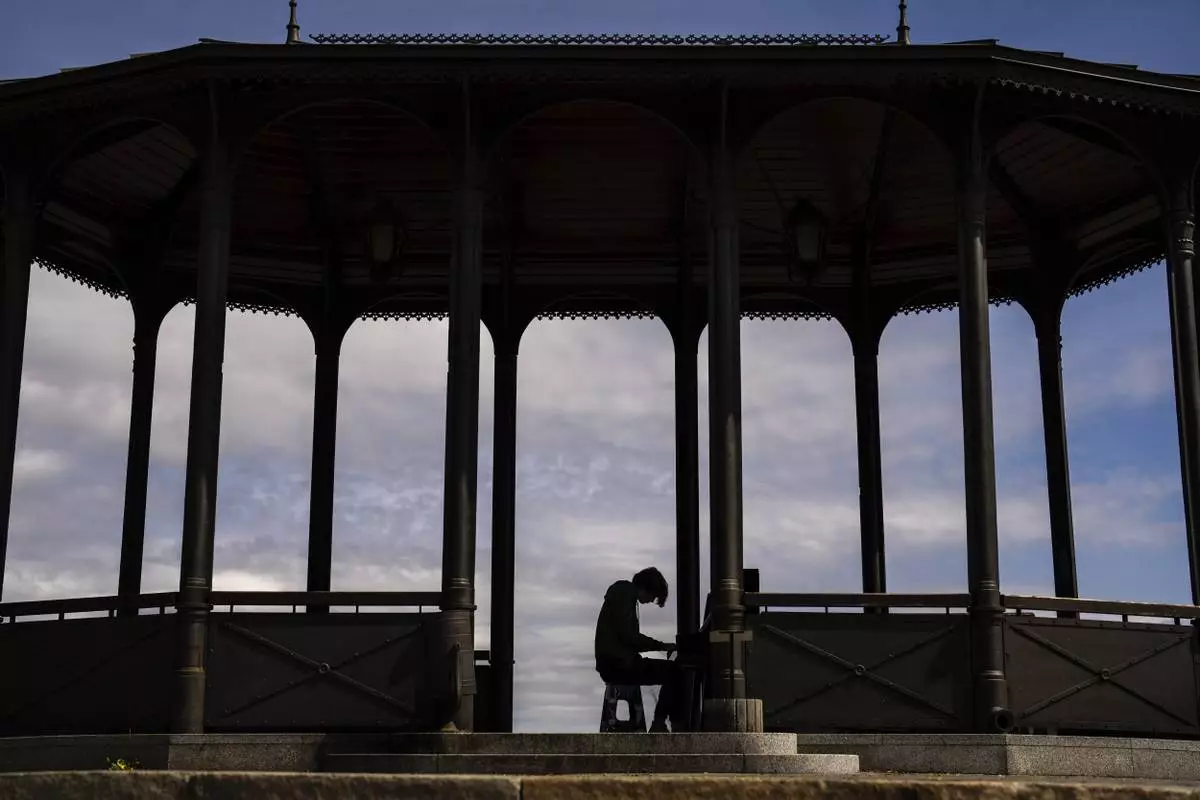
Ukrainian young acting student Gleb Batonskiy plays piano in a public park in Kyiv, Ukraine, Thursday, April 25, 2024. (AP Photo/Francisco Seco)




